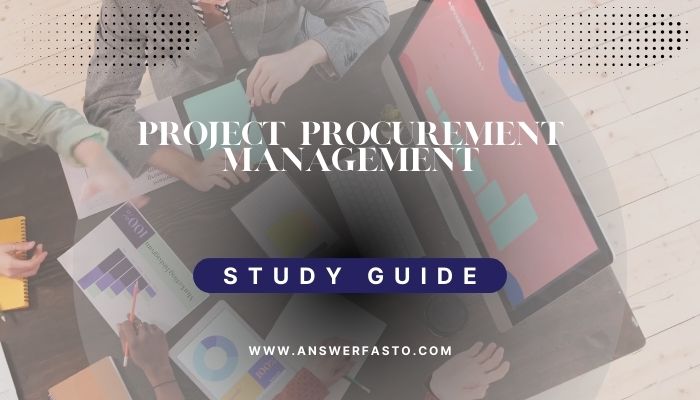Procurement management in projects, which is one area very vital in their management, focuses on obtaining goods and services or works from outside sources-Making sure the right resources are gotten at the right time, cost, and quality-right, exactly. Following this, we are looking at the advanced strategies and practices in procurement and vendor relationship management, covering procurement planning, contract administration, and procurement performance management.
- Procurement Planning.
Procurement planning is the procurement of all those necessitated goods and services, the timing of which procurement would be made, and their method of procurement. This phase is the basic foundation upon which the entire procurement process would be built upon. Some of these best practices are:
- Market Analysis:
Conduct market research and analysis to develop an understanding of the capabilities of available vendors and overall market dynamics.
Example: For a construction project, one has to research different suppliers market-wise to compare their prices for some quantity of materials concerning quality and reliability.
- Needs Assessment:
Document what the project requires clearly stating specifications about the new goods or services. Well-written would probably be a Statement of Work (SOW) or Request for Proposal (RFP).
Example: In a software development project, clearly mention the expected features, performance criteria, and security requirements in procuring development services.
- Risk Assessment:
Derive key procurement risks like possible disruption in the supply chain or cost overruns, and then take action to come up with a risk mitigation and contingency plan.
Example: Your project relies on a single specialized component from one supplier. Have another supplier ready in case of trouble with the main supplier.
2. Vendor Selection
This kind of very serious project is a reason for well-chosen and right vendors. It’s an advanced vendor selection strategy.
- Evaluation Criteria:
An evaluation system is defined that, according to project need, vendor capabilities, past track, and cost, should include a eighted score giving an objective comparison of vendors.
Example: For instance, weight safety records, cost, and completion time against experience while choosing a construction contractor.
- Negotiation of entitlements:
Falls under mutual terms in respect of price, schedules in making payment stand expected performance criteria in most instances into a contract. Do try an example of walking away for terms that do not benefit either party.
Example: Awarded IT service contracts (SLA) to comply with project performance needs for uptime and compliance penalties when procuring an IT service.
3. Contract Administration
Vendors selected are everything- things left between the parties against which both will be obliged to carry out their duties. Some of the best practices include
- Clear Documentation:
A record of each communication with respect to the o contract, modifications to the contract, as well as all monetary transactions concerning that contract, should be available. These records can be utilized to clarify disputes and audit trails.
Example: Record keeping would include construction change orders, approvals, and resolutions regarding delays or quality issues.
- Performance Monitoring:
A continuous evaluation of the present vendor vis-a-vis contract terms and key performance indicators as well under recurrent reviews for immediate identification and resolution of deviation from expected standards.
Example: For instance, a marketing agency is on board for an advertisement campaign; so much of the activity will be monitored for key metrics such as conversion rates, cl
4. Operation of Performance Management in Procurement
The systematic appraisal of procurement achievement fuels continuous development. Among some of the key actions are:
- Key Performance Indicators (KPIs):
Define and assess KPIs about procurement like savings, vendor performance, contract compliance, and delivery time.
Example: Measure savings achieved through improved efficiencies in procurement against the budget of a project.
- Lessons Learned:
Post-project reviews to discover what has worked well and where the procurement proce toss failed provide invaluable lessons for improving future projects.
Example: At the end of a software development project, the procurement process may be investigated the for validity of the vendor selection criteria followed and whether contractual penalties were enforced.
Conclusion
Planning, vendor strategic source selection, contract administration, and performance were daily in the process of efficient management of procurement in a project. Because procurement of the project has the advancement of instruments and best practices in each of these territories, significant outcomes from the project can be achieved and the purchased service enhanced. Define these best practices based on the specific requirements and complexities that are associated with your project for maximum benefit.



